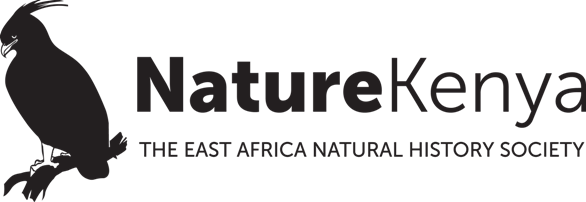Vultures are often depicted as sneaky and greedy. But these big birds are the “clean-up crew” of the vast open spaces. By feeding on dead animals, they keep the environment clean and free of disease.
Have you seen them in flight? Soaring on huge wingspans, they are a magnificent sight. Sadly, in the past few years, vultures have been on a steep decline. They are victims of poisoning, habitat loss and other threats.
Nature Kenya’s efforts to conserve vultures takes many forms. Below is the story of how a threat to vultures has been negotiated to provide a potentially good outcome.
- Kipeto Wind Energy Project (Kipeto) planned to build a wind farm on the edge of the Rift Valley in Kenya some years ago. The site is, unfortunately, not far from the Kwenia cliffs where Rüppell’s Vultures nest. It is also close to the ‘Karibu’ White-backed Vulture colony. Before the wind turbines could be set up, BirdLife International noted the steep decline in vulture numbers in Africa, and the IUCN Red List of Threatened Species classified Rüppell’s and White-backed Vulture as Critically Endangered.
- A Bird Conservation Consortium (BCC) composed of Nature Kenya (BirdLife Partner in Kenya), BirdLife Africa Partnership Secretariat, The Peregrine Fund and the Kenya Birds of Prey Trust was formed to engage with Kipeto.
- The BCC recognises the need to develop wind power in Kenya. The BCC does not object to wind farms that are placed in locations that avoid significant biodiversity impacts.
- Unfortunately, by the time the BCC became aware of it, the Kipeto project was already well advanced in terms of design, financing, political and community support. The Kipeto
developers recognised the biodiversity challenge and subjected the project to International Finance Corporation (IFC) performance standard 6. The only way the project could lead to net biodiversity gain was through a biodiversity offset mechanism. - IFC Performance Standard 6 recognizes that protecting and conserving biodiversity, maintaining ecosystem services, and sustainably managing living natural resources are fundamental to sustainable development. As a matter of priority, the client should seek to avoid impacts on biodiversity and ecosystem services. When avoidance of impacts is not possible, measures to minimize impacts and restore biodiversity and ecosystem services should be implemented. For the protection and conservation of biodiversity, the mitigation hierarchy includes biodiversity offsets, which may be considered only after appropriate avoidance, minimization, and restoration measures have been applied. A biodiversity offset is designed and implemented to achieve measurable conservation outcomes that can reasonably be expected to result in no net loss and preferably a net gain of biodiversity.
- The BCC initially opposed the Kipeto project because of its placement and the potential impact on threatened vultures. Vultures were likely to collide with the wind turbines and transmission lines. Although the developers offered resources for vulture conservation, the BCC did not see a credible plan for mitigation.
- With the leadership of Actis Limited, the Kipeto developers chose to positively engage with the BCC to look for a better solution. The BCC set specific conditions for engagement with the project. These covered, among others, plans for effective on-site mitigation and off-site offset activities, development of measures to demonstrate ‘net gain’, appropriate long-term governance and finance arrangements, recognition of the BCC’s ongoing watch-dog role, and recognition that BCC engagement does not imply endorsement of the project location.
- These conditions have been met. The BCC has since taken the measured decision to engage positively with the project and to bring our expertise to bear on mitigation and offset activities. Given the context at Kipeto, our judgment is that this approach has the best chances of positive long-term outcomes for vultures.
- Proposed on-site mitigation measures at the Kipeto site include, but are not limited to:
- Continued pre-construction monitoring of vultures, resident raptors, migratory raptors and other migratory soaring birds, to understand seasonal and daily variation in activity patterns, inform the design of mitigation measures, and improve estimates of potential project impacts. Detection rate experiments for bird and bat carcasses beneath turbines will also be undertaken, to calibrate subsequent collision fatality monitoring. Further monitoring of bat activity at proposed turbine sites will also be carried out.
- Shut-down on demand, carcass clearance and collision fatality monitoring on site.
- Offset measures are still being discussed. They include, but are not limited to:
- Supporting a geographically-focused integrated anti-poisoning programme, to address one of the most serious threats facing these species in the region.
- Offsets for other raptors and soaring birds, to achieve at least no net loss for these important components of the natural environment. These offsets will focus on retrofitting of dangerous electrical distribution lines, to prevent the deaths of birds from electrocution.
- The BCC has made decisions throughout based on obtaining the best outcomes for vulture conservation. This project has also provided valuable learning for financial institutions, governments, and developers for improving application of the mitigation hierarchy in future. For example, BCC has since been actively involved in the development of a Strategic Environmental Assessment (SEA) for Wind Energy and Biodiversity in Kenya, which is near completion. This will help in guiding developers and the government in optimal placement of future renewable energy developments to avoid cumulative negative impacts on vultures and other sensitive biodiversity.
